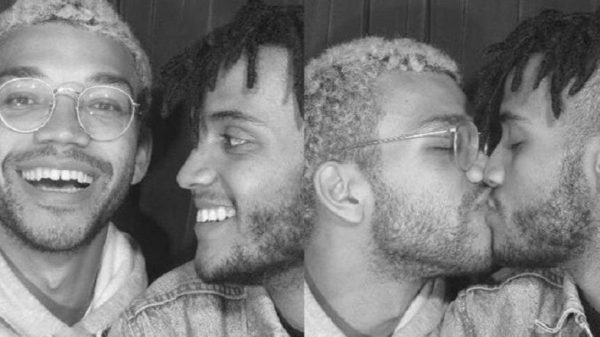“Who is you, Chiron?” asks a grownup Kevin after the two teen lovers are reunited as adults. The moment is heavy, notable for its unapologetic Southern diction and loaded with so much meaning. It’s a tender moment between two black men that we don’t see often. Or ever really. This is a scene that takes place towards the end of the Oscar-winning film Moonlight.
The play on which it’s based, In Moonlight Black Boys Look Blue, is a wonderfully queer story about a young, black boy coming to terms with his sexuality in a community that doesn’t accept or understand him. When I first saw Moonlight, I was literally out of breath. The film itself is a transformative experience, but as a black, gay man, I could see elements of myself in Chiron. I recognized parts of my story in his journey. I was anxious and teary-eyed throughout most of the film. I realized that the film was the first time I’d ever seen these elements of my life portrayed on the big screen.
Then, I wondered why the hell it took so long. Why, in 2016, was this the first time I was seeing a major motion picture center so heavily on a story of black, gay love? I know it’s not the first, but it’s had unprecedented success (most notably the Best Picture Oscar) and visibility.
Once upon a time, it seemed like we were headed in the right direction, that queer stories were multiplying. We weren’t so much infiltrating the mainstream as we were pulling up seats to the table. And for a while it seemed like we’d been invited.
Patrick Ian Polk was busy breaking ground with two seasons of Noah’s Arc. E. Lynn Harris had built a career exposing the underbelly of closeted gay men in his best-selling fiction. Even now, James Baldwin has been resurrected in the documentary, I Am Not Your Negro. He was a fiery literary complement to Bayard Rustin’s civil rights strategizing.
But for the few novels and shows and movies that have broken through, they carry a burden. It’s the burden of representing the entire black, gay experience. They’re challenged with telling a specific and unique story that’s engaging, but it can’t be so specific that it alienates people who’ve gone through something different.
That’s why we need more. We need more queer writers. We need more queer directors. We need more queer art and storytelling. The responsibility to document our experiences can’t fall on the shoulders of a handful. If ever there was a time in which space allowed for more of this creativity, it is now.
For most of us, hardly a day goes by without thinking about the Trump administration. Living in fear of when the hammer will come down. When will that rumored “religious freedom” executive order finally make its way down the pipeline and start chipping away at our human rights?
One of the only ways we can remind the administration that we’re here is by speaking up. We can speak up with beautifully crafted films and painfully detailed novels and breathtaking plays. Through our art, we can tell our stories, and we can make sure that everyone knows we are here. But we can’t do this if we depend on a small group to do it for us.
America needs queer stories. From all walks of life. From every letter of the acronym LGBTQ. This art serves as a way for us to document the times and educate the public. We can’t depend on anyone else to tell these stories. And judging by the Academy’s view of Moonlight and its 3 Oscar wins, there’s an audience that’s now willing to listen.
Who is you, Chiron?
Though we don’t get a deliberate answer on who Chiron is, we know because we’ve seen his story. When someone asks you the same, will you have a story to reference? Let’s hope so.

